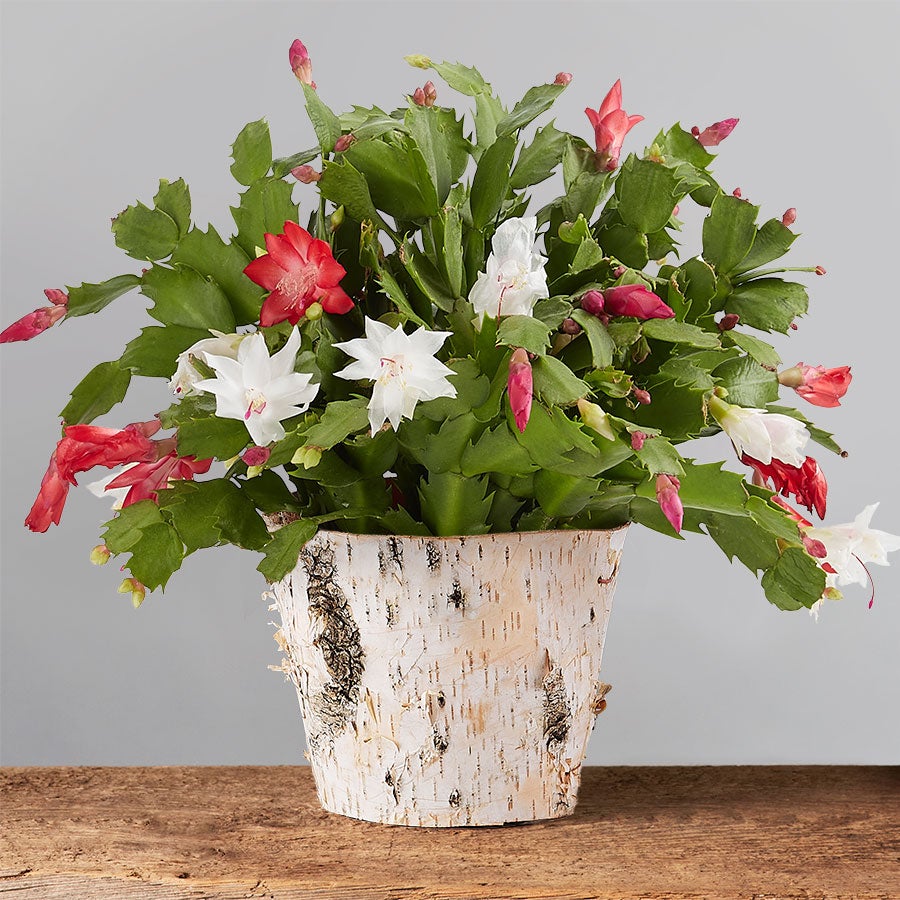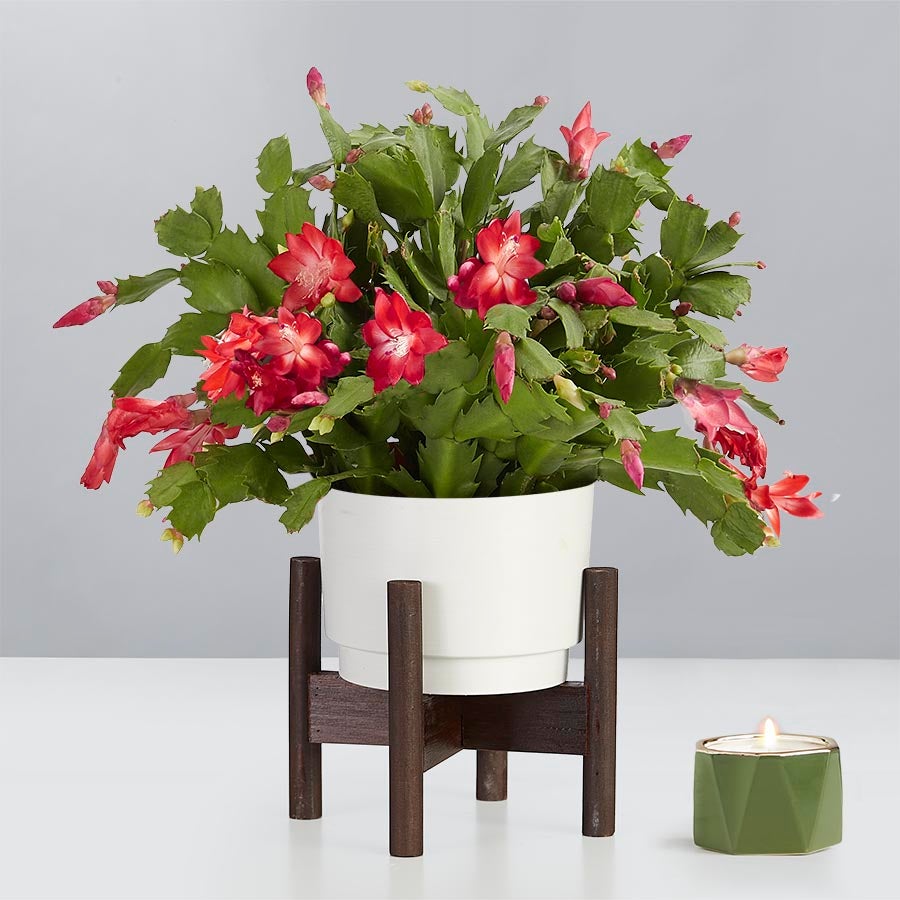Caring for Christmas Cactus
Colorful, tropical flowers are the highlight of Christmas cactus, but another joy is that they can last a lifetime—providing decades of beauty to brighten a home. It is not uncommon to hear about 100-year-old specimens, so unlike grow-and-toss holiday plants, like paperwhites and often poinsettias, they become more like family friends. Give them good care, and the rewards will be lasting.
Ours arrives in bud and bloom and may have flowers in shades of carmine, pink, and white. Through the season, these spine-free cacti will continue to bloom and set buds. By January, blooming will wind down to a halt until the next holiday season, though some buds may appear now and then throughout the year. When not in flower, holiday cactus looks structural and interesting. Plant them in ornamental pots or hanging baskets to make the most of their good looks.
Christmas Cactus 101 & Care Essentials 🎅🌵
- Common Name: Holiday Cactus, Crab Cactus, Christmas Cactus
- Botanical Name: Schlumbergera truncata
- Plant Type: Tender Perennial
- USDA Hardiness Zones: 10-12
- Height and Width: 12 inches x 18 inches
- Light Preference: Bright, Indirect Light
- Bloom Time: Late Fall to Winter
- Origin: Brazil

Top 5 Holiday Cactus Problems and Solutions
- Flower buds can fail to develop if light has been insufficient or plants were not provided adequate water before October when watering ceases.
- Flower bud loss is a common stress sign that can be caused by low humidity and too little or too much water. Water until plants are just moist and let them dry between watering. Mist plants every few days while in bud and flower.
- Reddish-purple foliage indicates too much sunlight. Move them to a spot with bright, indirect light.
- Stem wilting and wrinkling are stress signs of dry soil. Provide a little more water.
- Yellowing and softening of stems indicates too much water. Let the soil become dry between watering.
What Christmas Cactus Needs
Christmas cactus are natives of Brazilian coastal rainforests, so unlike most other cacti, holiday cactus prefer partial sun or bright, filtered sunlight. Full sun will cause the stems to turn reddish-purple hues instead of a deep green color. If this happens, provide more indirect light. Containers must have good drainage. A porous potting mix formulated for cacti and succulents is ideal, though holiday cactus can withstand standard potting soil with a little extra perlite, a common potting soil mineral additive that increases drainage. Slow-release fertilizer will boost overall growth and flowering

Correct watering practice makes a big difference in the health of holiday cactus. Provide weekly water from spring to summer—more water may be needed if you take your plants outdoors in summer and the weather is extremely hot weather. Refrain from watering in early October until plants set buds, and then water weekly until flowering stops. Water twice-monthly through winter. We recommend 50-60% room humidity for best growth and flowering.
If plants need to be watered more frequently and their roots can be seen growing along the container sides, or through any drainage holes, then it’s time to repot. The best time to do this is after they bloom. Choose slightly larger planters with drainage holes. I like to leave at least an inch and a half at the top of the pot for watering.
Cover the soil surface with pebbles to make plantings look extra attractive. Don’t forget, we offer a wide variety of other Christmas plants delivered to you or a loved one. We also have other holiday classics for sale, like the Red Amaryllis, Red Poinsettia, and even a Red Poinsettia Floor Plant!

